Brackets for Fixed Awnings
The following types of brackets are used in the assembly of fixed awnings. You can find them all in our awning hardware section.
.jpg)
A bracket is any type of support hardware, usually metal and attached to a wall, used to hold, attach, mount, or secure. This makes bracket hardware especially useful in awning and shade applications. Hardware brackets can be used for home or commercial use. They can be made from a number of materials (metal brackets are the most popular option) and are used across many industries. Many of our customers are looking for awning brackets, although brackets for curtain track and retractable awnings are also very popular.
Some common applications for bracket hardware:
Brackets come in many sizes. The size of bracket you'll need will depend on the demands of your specific project. They come with or without fasteners (most often used with screws) and can be mounted on multiple surfaces, with many designed to be mounted onto wood or studs. Find the best bracket for your specific job by reading below.
The following types of brackets are used in the assembly of fixed awnings. You can find them all in our awning hardware section.
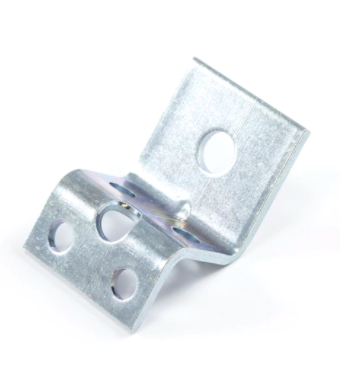
These Z-shaped brackets are designed to easily mount an awning frame flush to a wall or building. Simply mount your Z bracket to the surface, drop your awning frame onto the shelf of the Z bracket, then secure your awning frame through the variety of holes in the Z bracket.
At Trivantage, we're proud to offer many sizes for you to choose from. Also, the unique single gussets engineered into the Z brackets provide additional strength.
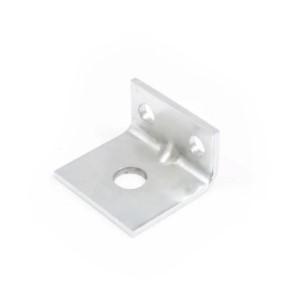
Simple in design, these L-shaped brackets are used when a Z bracket is not needed. They're commonly used to mount awning tubing to a wall. L brackets can also be used on 3/4" square tubing. See answers to common questions at the bottom of this guide for more on L brackets.
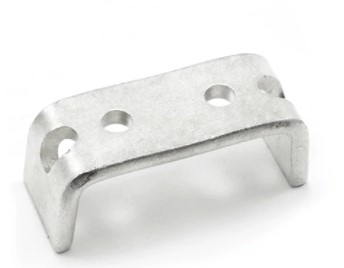
A joining bracket is used to join two square tubing sections (both placed and secured in the center of the bracket), commonly in the construction of awning frames.

Hinge brackets (or camelback hinges) are most often used in drop-arm awnings. They're used to fasten projection arms of awning frames to a building.
Trivantage carries a number of awning hinge brackets, often used for window awnings and traditional awning frames using industry-standard awning hardware. Use in conjunction with Slip-Fit or threaded eye ends.
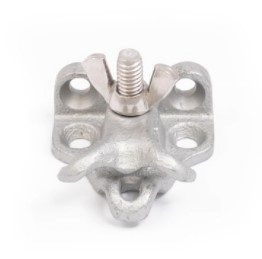
Head rod clamps are used in conjunction with a fiberglass or iron head rod. Head rod clamps are used to mount traditional roll-up vertical curtains, drop-down window awnings, and a variety of shade panels.
Use the following brackets when installing a shade sail. You can find them all in our shade sail hardware offerings.
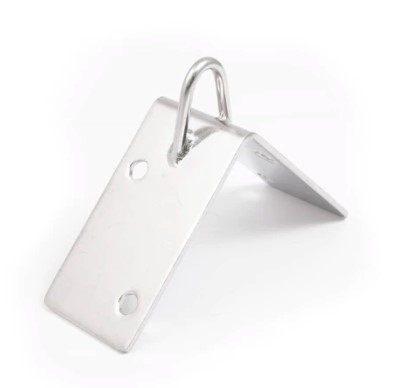
A mounting bracket is a general term to describe brackets used for different kinds of mounting requirements needed when installing a shade sail. There are several kinds, including internal corner brackets, external corner brackets, diamond pad eyes, and wall plates.
Internal corner brackets are installed to an inner corner foundation before attaching the fabric. External corner brackets are installed to the outer corner foundation. Diamond pad eyes and wall plates mount to a flat surface of the support structure.
There are many kinds of brackets used in retractable awnings, motorized blinds, and roller shades. Three of the most popular brands in the shade solutions market are, Somfy, Solair, and RollEase.

Our Solair retractable awning line comes with a variety of mounting options. Solair brackets include beam brackets, wall brackets, ceiling mount brackets, end brackets, roof mounting brackets, roller tube support brackets, L brackets, hood brackets, bracket adapters, and universal mounting brackets (can be mounted horizontally or vertically). All are used in conjunction with Solair shade systems, including Solair Pro, Comfort, vertical curtains, and Maxi Large Window Awnings.
Some installation tips:
We feature lots of flexibility and mounting options for your specific needs.
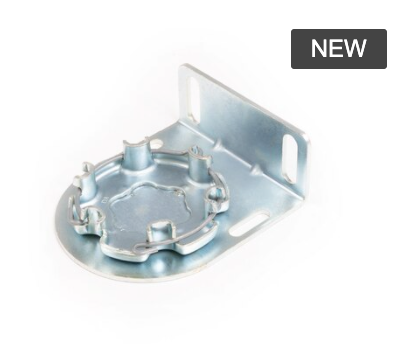
We also offer mounting brackets from Somfy. Somfy brackets include universal brackets, motor mounting brackets, adjustable brackets, and idler brackets (used opposite the motor bracket to enable free spinning of the motorized shade).

RollEase, a popular brand of roller shades, is a go-to for commercial settings like coffee shops and eateries. RollEase brackets include roller shade mounting brackets and fascia brackets. When you want to conceal your brackets, clutch, and roller tube, use the fascia bracket to mount and the corresponding RollEase fascia to snap over. We carry all the RollEase hardware you need to make your interior roller shades.
One of the most popular brands in industrial track systems is Duratrack. You can choose from wall mount, end mount, and vertical mount brackets. We offer Duratrack industrial track in two sizes with a number of mounting options to mount to any type of surface. This allows you to accomplish any industrial track mount design. The types of Duratrack curtain brackets are listed below.
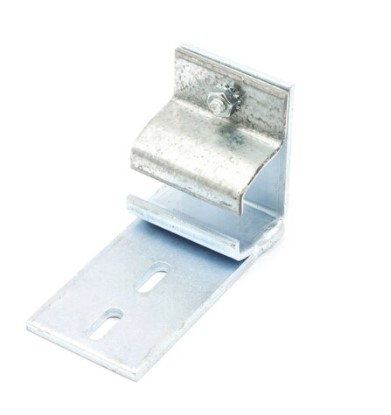
These brackets are used to mount something to an interior or exterior wall, like a track system, awning, or shelf. They're used in conjunction with galvanized steel track.
L brackets are typically used to mount awning tubing or shelving to a wall. Use lag screws to attach one side to the tubing and the other side to the wall. It can be used with 3/4" tubing as well as in applications where the strength of a Z bracket is not necessary.
Z brackets can be used upside down but it's usually not recommended with L brackets (less support is provided in an L bracket since it has fewer screw holes and no vertical piece).
There's no standard to how many Z brackets are needed to safely hold an awning to the wall. It's up to you or an engineer to decide what is best for any given project. Typically, our customers use Z brackets every 2-4 feet.
First, determine the material you'll be screwing (lagging) into. Then pick the proper fastener, screw the plate or tail into the wall, rest the awning onto the shelf of the Z bracket, and use Teks® screws to secure to the awning frame.
It's possible to combine different bracket types within a project as long as it aligns with the structural requirements. However, ensure that the combination maintains stability and load distribution. If in doubt, consulting professionals or engineers is recommended for a safe and effective outcome.
Each bracket type and material has a specific load capacity. It's crucial to choose brackets that comfortably exceed the expected weight. Consult load capacity information and consider dynamic loads. Seek expert advice for applications with higher stress demands.
Mounting brackets securely is vital for stability. Align and level brackets accurately before fastening. Use appropriate tools and follow manufacturer guidelines. Consider weight distribution across brackets to avoid undue stress on a single point.